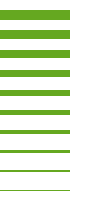https://doi.io-warnemuende.de/10.12754/data-2021-0002-01
doi:10.12754/data-2021-0002-01
© Author(s) 2021. This work is distributed
under "CC BY 4.0 International License"
Dataset of weight-to-weight conversion factors for benthic macrofauna of the Baltic and the North Seas (Version Data release 2)
dataset
Citation: Gogina, M., Zettler, A., and Zettler, M.L.: Dataset of weight-to-weight conversion factors for benthic macrofauna of the Baltic and the North Seas, The Leibniz Institute for Baltic Sea Research, Warnemünde, http://doi.io-warnemuende.de/10.12754/data-2021-0002-01, 2021
Abstract. Studies on energy flow, food web interactions, fishery and population dynamics, dependent on the estimates of biomass, that often involve the use of weight-to-weight conversion factors for rapid assessment of required dry-weights based metrics from more widely available measurements of wet-weights. However, until now for many species and groups the freely available widely-applicable conversion factors remained very rough approximations. Here for the first time publish the taxonomically most detailed and statically most robust list of ratios of wet-weight (WW), dry-weight (DW) and ash-free dry-weight (AFDW). The dataset presents the broad opportunity for reuse and repurposing by providing, along with aggregated calculations, geo-referenced values for over 17000 single measurements for 497 taxa with sampling dates. It empowers the future user to do sub selections of data to combine them with own local data, instead of only having a single number per region. Dataset can help to quantify natural variability and uncertainty, and refine current ecological theory.
Descriptors | Summary of the descriptors used: UniqueID – unique record number; Station – station name; Latitude (N) – latitude north (decimal degrees, minus values are south of equator); Longitude (E) – longitude east (decimal degrees, minus values are west of Greenwich, 0°); Date – date data was collected; Group – group the taxa is classified to in order to facilitate summary (these groups are rather functional, i.e. not strictly taxonomic, as they vary in rank ranging from Phylum to Order level); Taxa – taxonomic name, mostly to species level as accepted by the World Registry of Marine Species; Size class – size category of individuals included in the measurements, in 5 mm steps, when biomass was determined separately for different cohorts (this was only the case for eight Bivalvia species); Number of Ind. – number of individuals used in the measurement; Tare (g) – weight of tare, in g; T+WW (g) – weight of tare with wet (fresh) organic material, in g; T+DW (g) – weight of tare with organic material obtained after drying specimens to constant weight in an oven at temperature of 60°C, in g; T+Ash (g) – weight of tare with rest material obtained after incineration at 500°C in a muffle furnace, in g; WW (mg) – wet-weight in mg after subtracting the tare weight; DW (mg) – dry-weight in mg after subtracting the tare weight; AFDW (mg) – ash-free dry-weight in mg after subtracting the tare weight; WW-->DW – conversion factor from wet-weight to dry-weight derived from particular measurement; WW-->AFDW – conversion factor from wet-weight to ash-free dry-weight derived from particular measurement; Region – region of material collection, the Baltic Sea or the North Sea;
Is Related To: Gogina, M., Zettler, A., and Zettler, M.L., Weight-to-weight conversion factors for benthic macrofauna: recent measurements from the Baltic and the North Seas, in prep for Earth System Science Data (ESSD)
Records completed to 2020. Compiled by Anja Zettler, edited and adapted for publication by Mayya Gogina and Michael L. Zettler.
